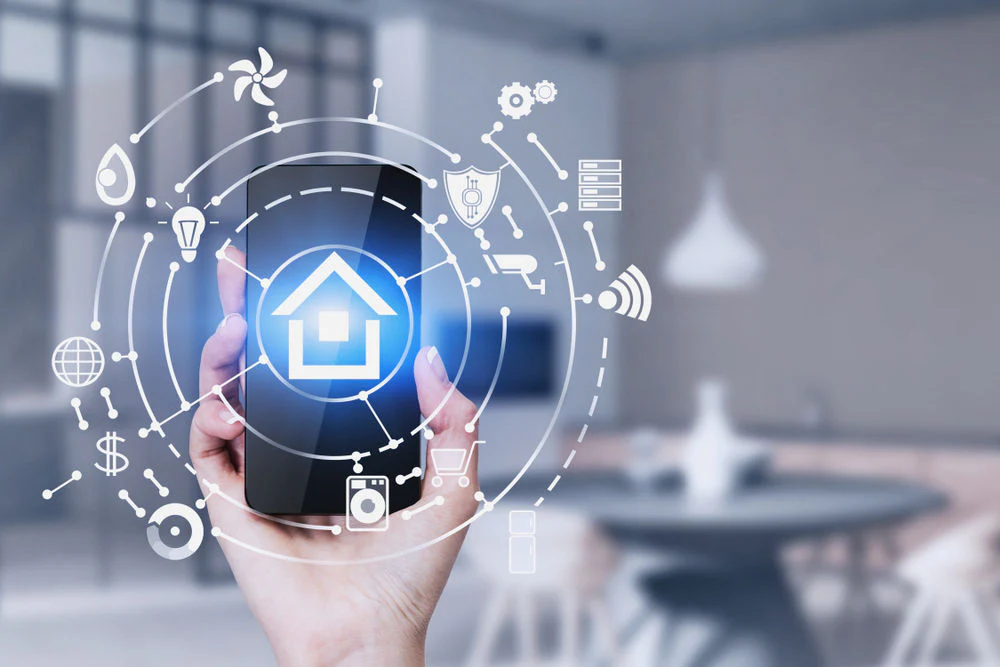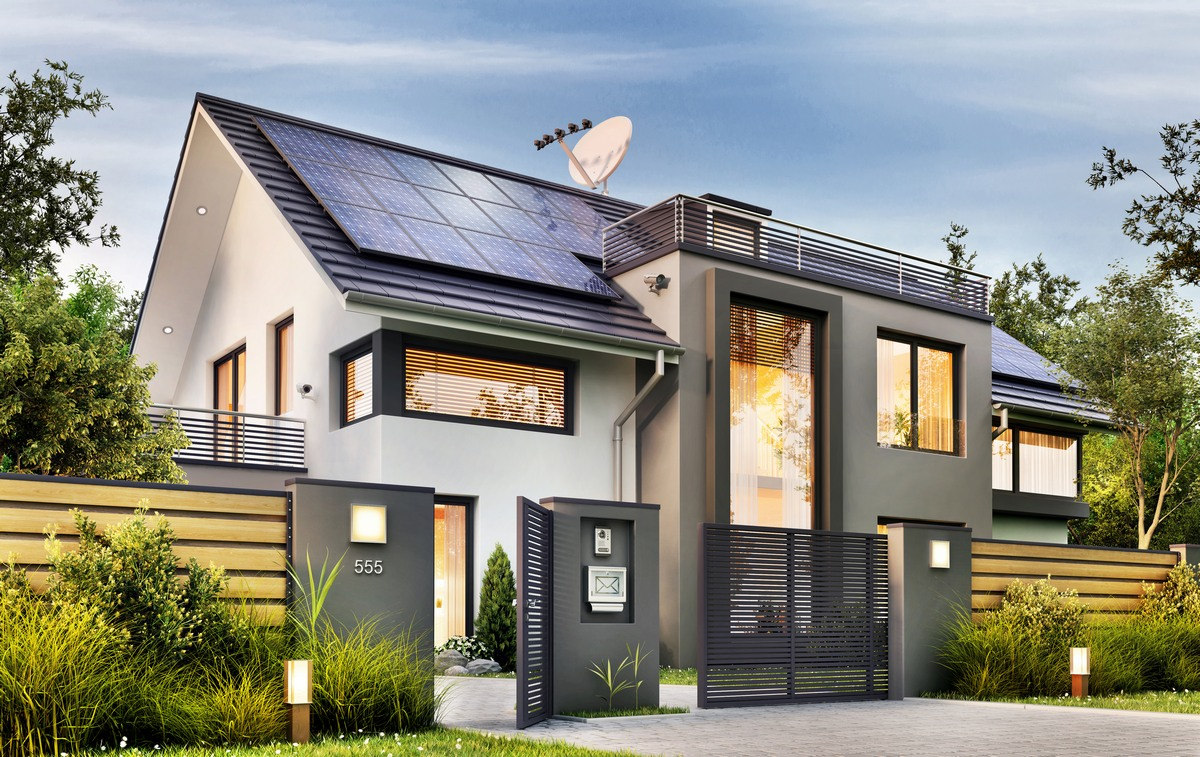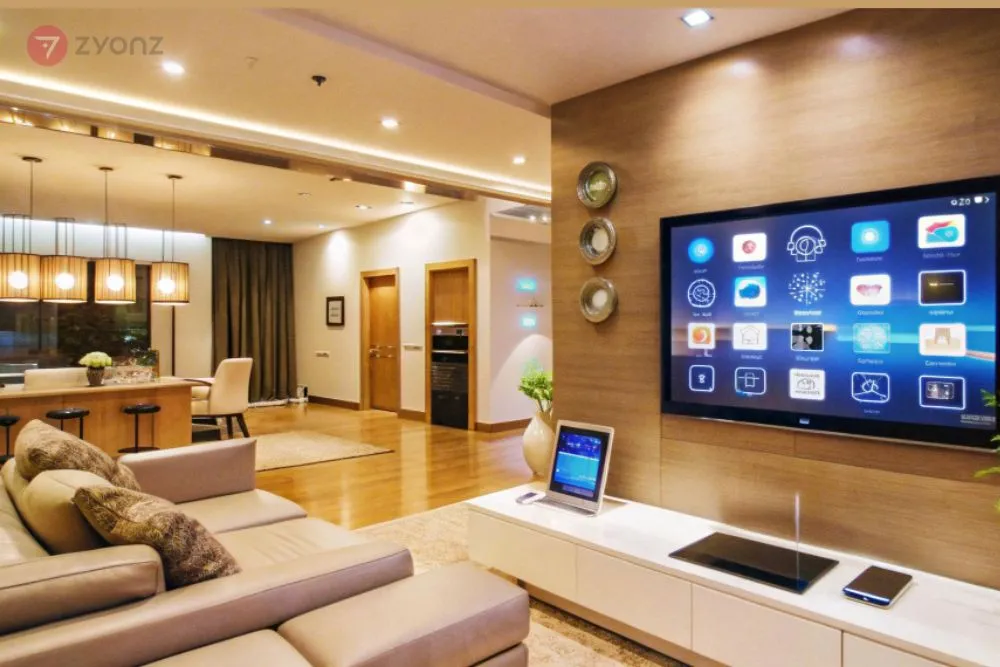In the last decade, the way we interact with our homes has undergone a remarkable transformation. What once required manual effort is now being handled by intelligent systems that respond to our needs in real time.
From adjusting the lights with a voice command to remotely managing home security systems, smart home technology is revolutionizing domestic life. This integration of convenience, safety, and energy efficiency not only enhances comfort but also reflects a broader shift towards more sustainable and efficient living. Discover how you can modernize your space with smart home automation.
What Does Smart Home Automation Mean?
Smart home automation refers to the use of advanced technology to control household functions automatically & remotely. This involves a network of connected devices—such as lighting, appliances, security systems, and HVAC units—that are controlled via smartphones, tablets, or voice assistants.
The key feature of a smart home is its ability to learn your habits and adjust settings accordingly, creating an intuitive living environment tailored to your routine.
With the right configuration, your home can turn on the lights as you enter, lower the blinds in the afternoon, and lock the doors at night—all without your direct input. This combination of automation and intelligence sets the stage for the future of residential living.
Advantages of Smart Home Integration

One of the most immediate benefits of smart home automation is convenience. With centralized control, users can manage multiple systems simultaneously from a single interface. Whether you’re at home, at work, or traveling abroad, your home’s essential functions remain within reach.
Security is another major advantage. Smart doorbells with video capabilities, motion detectors, and automated locks help safeguard your property and loved ones. Alerts sent directly to your device allow for quick action in case of unexpected activity, offering peace of mind wherever you are.
Energy efficiency is also a hallmark of smart living. Automated thermostats and lighting systems optimize usage based on occupancy and time, reducing wastage and lowering utility bills. These systems can even offer data insights on your consumption habits, helping you make informed decisions to improve sustainability.
Popular Smart Home Features
Smart home setups can range from basic to highly sophisticated, depending on individual preferences and budgets. Common features include smart lighting systems that adjust brightness or color temperature throughout the day, and smart thermostats that learn your schedule to keep your home at an optimal temperature.
Smart plugs and switches allow for automation of regular appliances like coffee makers or fans. Homeowners also enjoy integrating entertainment systems that can be controlled by voice or mobile app, enhancing the leisure experience.
Voice assistants such as Amazon Alexa or Google Assistant serve as central hubs, enabling seamless control over all connected devices. These hubs continue to evolve, offering greater integration and support for more functions as new technologies emerge.
The Role of Smart Homes in Urban Living

Urban centers, especially tech-forward cities like Singapore, are rapidly embracing smart home automation as part of their lifestyle. As residential spaces become more compact, homeowners look for ways to optimize their living environment. Smart technology answers this need by offering control, space efficiency, and enhanced safety.
Developers are now integrating smart systems directly into new builds, anticipating the rising demand among tech-savvy buyers. From app-controlled intercoms to sensor-based lighting and air quality monitoring, smart home features are quickly becoming standard in modern housing projects.
As these innovations become more affordable and widely adopted, smart homes will not just be a luxury—they’ll be a necessity in creating sustainable and efficient communities.
Looking Ahead: The Smart Home Revolution
The future of home automation is promising, with advancements in artificial intelligence and machine learning poised to make homes even more intuitive. These technologies will further personalize the user experience, adapting automatically to changes in lifestyle, climate, and even mood.
Whether you’re upgrading a single room or transforming your entire residence, smart home automation opens the door to a more responsive, secure, and enjoyable way of living. The transformation isn’t just about technology—it’s about reimagining how we live.Bottom of Form

